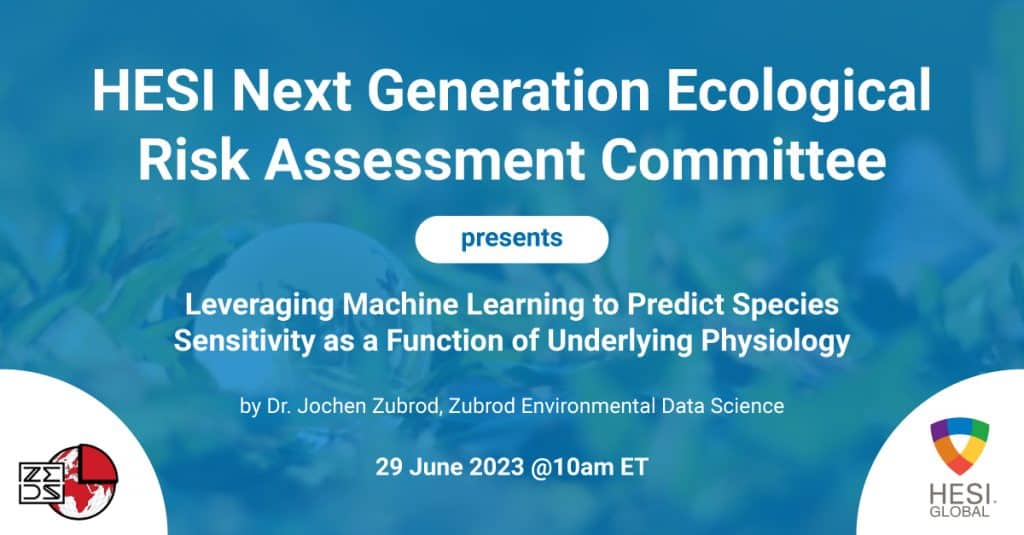Leveraging Machine Learning to Predict Species Sensitivity as a Function of Underlying Physiology
- Start Date/Time :
- End Date/Time :
- Location : Webinar, HESI Next Generation Ecological Risk Assessment Committee

Webinar organized by the HESI Next Generation Ecological Risk Assessment Committee:
Dr. Jochen Zubrod (Zubrod Environmental Data Science) presented ongoing research related to machine learning & species sensitivity.
Abstract
A major challenge in ecological risk assessment is estimating chemical-induced effects across taxa without species-specific testing. This is especially true for species under legal protection such as those listed as threatened or endangered under the Endangered Species Act (ESA), which cannot be taken for ecotoxicological testing. In these instances, surrogate animal models are used to estimate potential effects, but it is currently unclear whether the surrogate data are representative, protective, or realistic. Furthermore, the increasing requirements to assess risk to non-standard species are in stark contrast to the international efforts to reduce animal testing. Where ecotoxicological data may be more challenging to gather, information on species physiology is more available for a broad range of taxa. Physiology is known to drive species sensitivity but understanding about the relative contribution of specific underlying processes is still elusive. Consequently, there remains a need to understand which physiological processes lead to differences in species sensitivity. The objective of our study was to utilize existing knowledge about organismal physiology to both understand and predict differences in species sensitivity. Machine learning models were trained to predict chemical- and species-specific endpoints as a function of both chemical fingerprints/descriptors and physiological variables, including, but not limited to, dynamic energy budget (DEB) properties, life history traits, and potentially taxonomic/ phylogenetic relationships. We have explored this approach using publicly available data from the EnviroTox database, with ToxPrints and DEB parameters as predictor variables explaining chemistry and physiology, respectively. We found that a simple random forest model was able to predict chemical- and species-specific endpoints, and that DEB parameters were relatively important in the model. Further work has been conducted to refine and strengthen these models, and to quantify the importance and influence of physiological parameters. We anticipate that our approach will illuminate how physiological parameters drive species sensitivity which will allow more realistic extrapolations of effects across species without the need for additional animal testing.
Click to learn more about the Next Generation Ecological Risk Assessment Committee